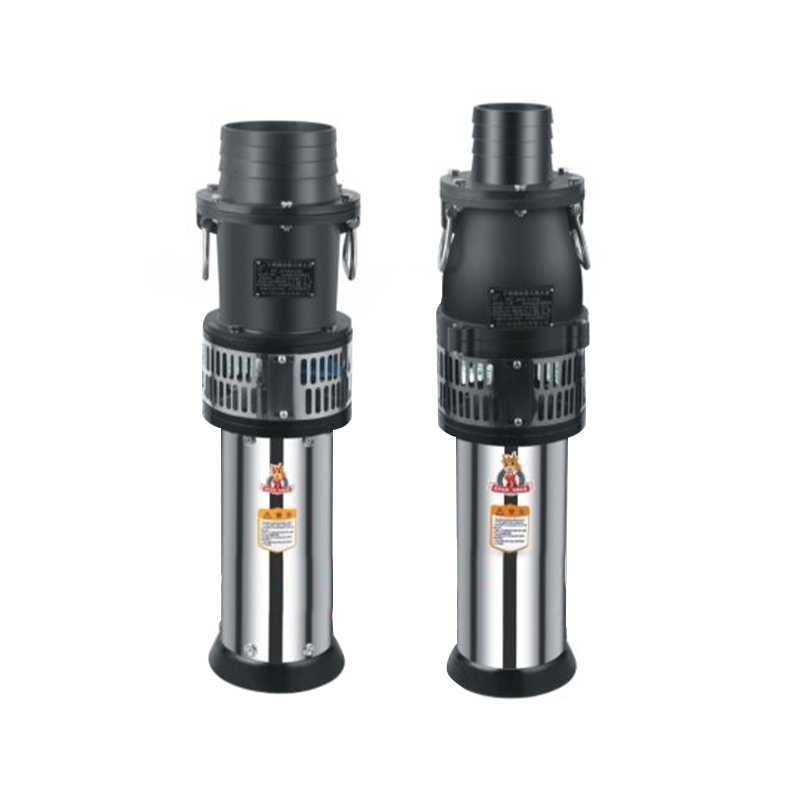QDX/B Stainless Steel Submersible Pump for Building and Industrial Drainage
The Stainless Steel Submersible Pump for Building and Industrial Drain...

Irrigation pumps, such as the centrifugal irrigation pump, irrigation priming pump, and irrigation lift pump, play crucial roles in ensuring the efficient movement of water for agricultural needs. However, these pumps can face various challenges that reduce their efficiency, leading to operational issues and increased costs.
The common challenges with a centrifugal irrigation pump is airlock or cavitation, which occurs when the pump is unable to maintain a consistent water flow due to air entering the system. This typically happens when the pump is not properly primed, or there are leaks in the suction line. Centrifugal irrigation pumps rely on continuous water flow to maintain pressure, and when air enters, it disrupts this flow, causing reduced performance or pump damage. The solution to this problem is ensuring the irrigation priming pump is functioning correctly. The irrigation priming pump helps remove any air from the system and maintains the necessary vacuum pressure for the centrifugal pump to operate efficiently. Regular inspection of the suction line for leaks is also important in preventing air from entering the system.
Another challenge faced by centrifugal irrigation pumps is inadequate water pressure. If the pump is too small for the system or if components like the impeller are worn out, the centrifugal irrigation pump may fail to deliver enough pressure for effective irrigation. To solve this, ensure that the pump is properly sized for the specific needs of the system. Additionally, checking the condition of the impeller and replacing worn components can significantly improve pump performance. Regular maintenance and proper calibration of the pump are also essential to maintaining consistent pressure and flow.
For irrigation lift pumps, one common issue is difficulty in lifting water from deep wells or reservoirs, particularly if the lift height exceeds the pump's rated capacity. Irrigation lift pumps are designed to move water from low elevations to higher areas, but when the vertical lift required is too high, the pump may struggle to maintain adequate flow. This can result in reduced efficiency and increased energy consumption. The solution is to ensure that the irrigation lift pump is appropriately rated for the required lift.
Another common issue with irrigation lift pumps is clogging of the intake filter. When drawing water from a natural source like a pond or river, debris such as leaves, mud, and algae can clog the filter, reducing the pump's efficiency. Regular cleaning of the intake filter is essential to prevent blockages. Installing a fine mesh filter or strainer can also help prevent larger debris from entering the pump, ensuring smoother operation.
Irrigation priming pumps also face challenges related to maintaining proper vacuum and pressure. If the priming pump is not working effectively, air can enter the system, which affects the performance of the centrifugal irrigation pump. This is often due to a buildup of debris or wear and tear on the priming pump. To solve this, regular cleaning and maintenance are necessary to ensure the irrigation priming pump operates efficiently.
Energy efficiency is another challenge, particularly in large irrigation systems where pumps operate for long periods. The continuous operation of centrifugal irrigation pumps, irrigation lift pumps, and irrigation priming pumps can lead to high energy costs. To mitigate this, selecting energy-efficient pumps designed for the specific system requirements is crucial. Additionally, ensuring that the pumps are properly sized and well-maintained can reduce energy consumption.
The use of centrifugal irrigation pumps, irrigation priming pumps, and irrigation lift pumps presents several challenges that can impact their performance. Regular maintenance, proper sizing, and addressing common issues like airlock, low pressure, clogging, and energy efficiency are critical to ensuring the pumps operate effectively.